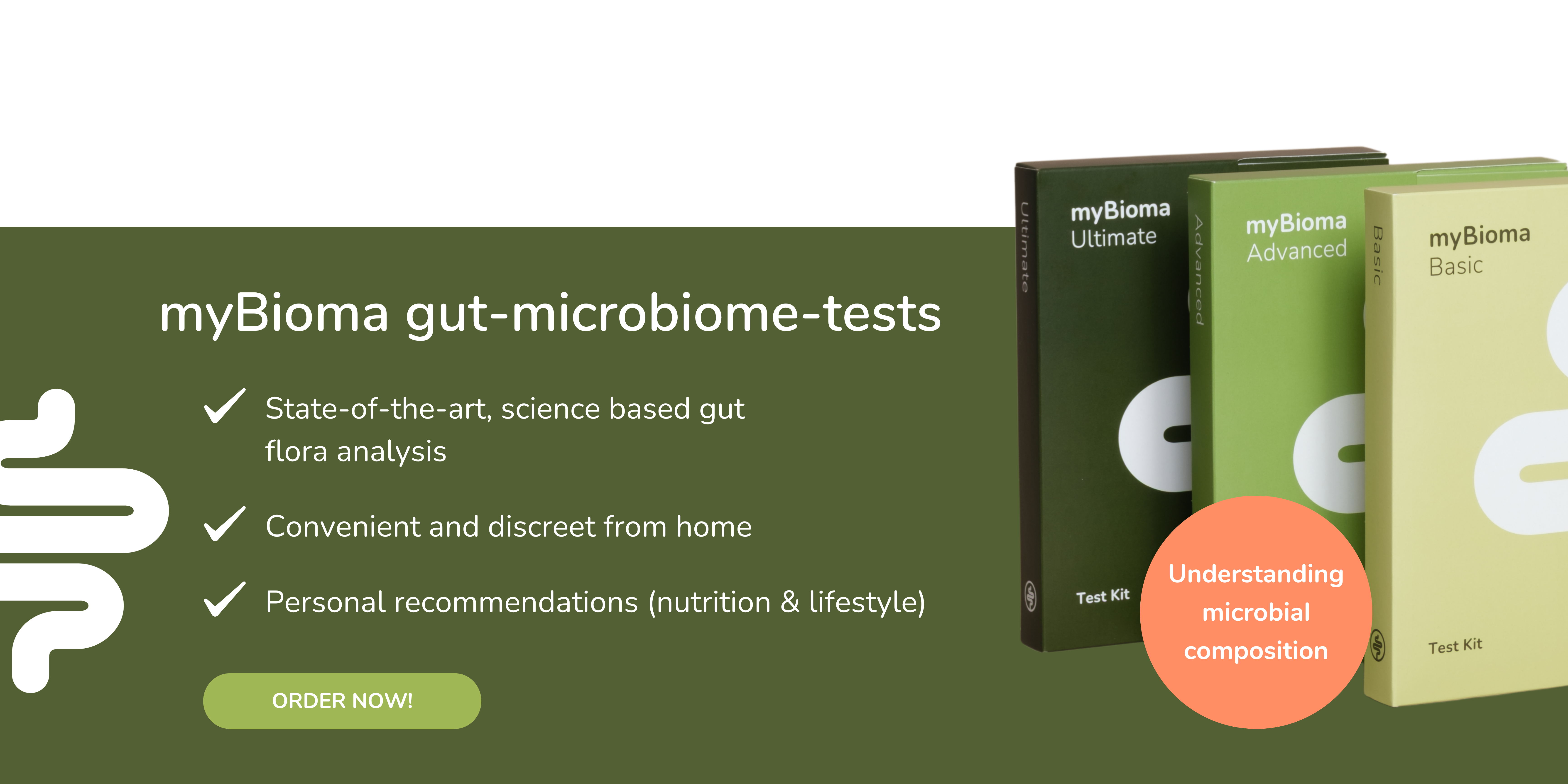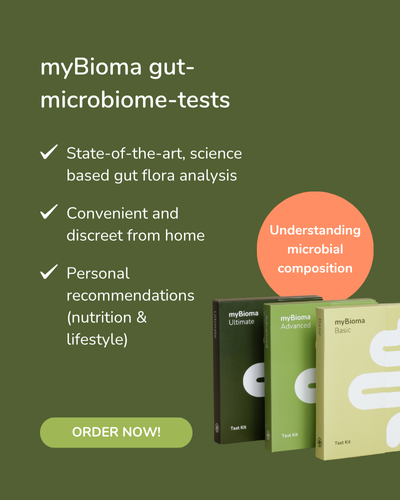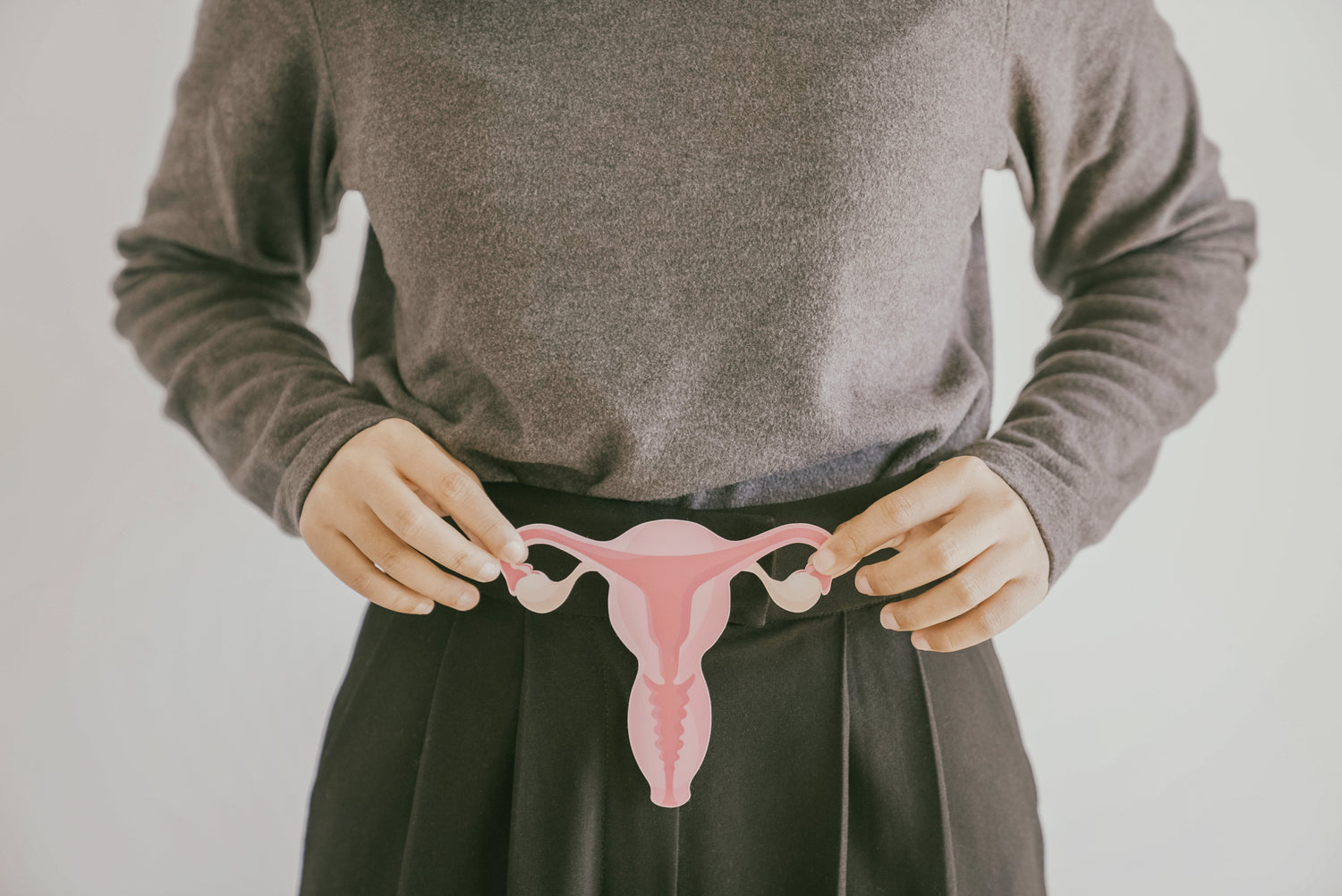"It's all the hormones' fault!" - everyone has heard this phrase at least once in their life. Hormones often contribute to our mood swings, pain, skin problems, menstrual cramps and thyroid problems. But how do we end up with hormonal imbalances in the first place, and what do our gut bacteria have to do with it? This topic and much more will be covered in today's article...
What are hormones?
Hormones are messenger substances that are produced by endocrine glands and secreted into the blood. Depending on the type of hormone, they are water-soluble or fat-soluble. Insulin, for example, is one of the water-soluble hormones. Insulin can be thought of as a taxi that transports sugar from the blood into our cells. Fat-soluble hormones are steroid hormones with cholesterol as their basic building block. Yes, cholesterol is vital and needed by our body. Only if too much cholesterol appears in the blood can it have a negative effect, but everyone needs a sufficient dose of cholesterol. But why do these messenger substances have such an effect on our body? Why do women suffer during menstruation, for example?
The female cycle
In the first half of a woman's cycle, more oestrogen is produced. A hormone that leads to the build-up of the uterine lining (and to women dressing more freely). Intestinal bacteria influence the amount of oestrogen in the body. They produce the enzyme ß-glucuronidase, which is responsible for converting oestrogen into its active form. In the second half, progesterone, which is calming for women, is produced, which not only has a calming effect on the psyche, but also on performance. It helps to prepare for the "forthcoming" pregnancy. The aim of the hormones that prepare the woman for fertilisation is the implantation of a sperm cell in the uterus. If fertilisation does not take place after ovulation, the hormones stop this process, the corpus luteum no longer produces hormones and the mucous membrane is discharged as menstrual bleeding. Accordingly, the body reacts in frustration, because it actually wanted to become pregnant. Mood swings, malaise, abdominal pain, diarrhoea and flatulence may occur. However, if there is very severe (often unbearable) pain, the cause could be endometriosis.
And what does the gut microbiome have to do with endometriosis?
Endometriosis is a multifactorial pelvic disease associated with the accumulation of endometrial tissue (endometriosis lesions). This tissue can cause no to severe symptoms such as pain and reduced fertility. Cytokines, oestrogens, stem and progenitor cells and gut bacteria all have an effect on the development of endometriosis. Oestrogen appears to play an important role, as a study by Galvankar et al. showed that oestrogen was necessary to trigger endometriosis in the first place (1). It stimulates the growth of ectopic endometrial tissue and inflammation. When oestrogen acts in an overactive way, symptoms can worsen. In addition, oestrogen can contribute to pain by affecting peripheral nerve fibres, which may explain the unbearable pain (2).
As mentioned earlier, intestinal bacteria influence oestrogen metabolism through the action of the enzyme ß-glucuronidase, which is responsible for converting it into the active form of oestrogen in order to bind to the oestrogen receptors (see Figure 1). The active oestrogen then migrates to the mucosal sites.

Figure 1: Altered oestrogen activity promotes the progression of endometriosis (after Jiang (3) et al. 2020).
According to Baker et al., endometriosis patients had more ß-glucuronidase-producing bacteria and a poor firmicutes/bacteroidetes ratio (4, 5). In a study of mice, it was shown that as endometriosis disease progressed, the firmicutes/bacteroidetes ratio shifted, leading to dysbiosis (5) (see Figure 2). If the microbiome is imbalanced, this can also affect metabolites that stimulate gonadotropin-releasing hormone (GnRH) in the brain. GnRH, which is produced in the diencephalon, stimulates the release of luteinising hormone and follicle-stimulating hormone. Both hormones lead to the production of oestrogen and progesterone and increase oestrogen secretion (6, 7).
Another study showed that alpha and beta diversity was lower in endometriosis patients than in controls (8). Diversity describes the diversity of the microbiome, the more diverse the bacterial composition, the more functions they can perform and the more resistant the microbiome is. Therefore, it plays an important role in the context of health. However, oestrogen also has an influence on the microbiome(9). Now the question arises again: which came first, the hen (hormone) or the egg (microbiome)?

Figure 2: The firmicutes/bacteroides ratio, an indicator of dysbiosis, is altered in endometriosis patients. (after Jiang (3) et al. 2020)
Intestinal bacteria and their immune function
Bacteria influence immune function and consequently inflammation. They are involved in the physiological function of the mucosal surfaces of the endometrial remodelling in the uterus and in the pH value, which in turn plays an important role in the development of the disease (10). In a study by Ata et al., Shigella and Escherichia bacteria predominated in endometriosis patients (11).
What diet is helpful for endometriosis?
It is definitely worth a try to eat a diet containing omega-3 fatty acids. A study by Hopeman et al. showed that women who ate a diet containing omega-3 fatty acids had a lower risk of developing endometriosis (12). Further studies are considering probiotic foods and a general anti-inflammatory diet to promote the right bacteria and reduce the risk of endometriosis. However, the topic is still in its infancy and many more studies are needed. The microbiome also affects inflammatory processes outside the gut. In addition, intestinal complaints that occur with endometriosis can be alleviated by balancing a microbiome imbalance. We at myBioma are sure that a microbiome-friendly diet is a good basis for any health.
References
- Galvankar et al. Estrogen is essential but not sufficient to induce endometriosis. Journal of Biosciences. (2017).
- Morotti M et al. Mechanisms of pain in endometriosis. European Journal of Obstetrics & Gynecology and Reproductive Biology. (2017).
- Jiang I et al. Intricate Connections between the Microbiota and Endometriosis. International journal of molecular sciences. (2021).
- Baker JM et al. Estrogen–gut microbiome axis: Physiological and clinical implications. Maturitas. (2017).
- Yuan M et al. Endometriosis induces gut microbiota alterations in mice. Human Reproduction. (2018).
- Jones LA et al. The ever-changing roles of serotonin. The International Journal of Biochemistry & Cell Biology. (2020).
- Paredes S et al. An Association of Serotonin with Pain Disorders and Its Modulation by Estrogens. International journal of molecular sciences. (2019).
- Svensson A et al. Associations Between Endometriosis and Gut Microbiota. Reproductive Sciences. (2021).
- Khan KN et al. Molecular detection of intrauterine microbial colonization in women with endometriosis. European Journal of Obstetrics & Gynecology and Reproductive Biology. (2016).
- Benner M et al. How uterine microbiota might be responsible for a receptive, fertile endometrium. Human Reproduction Update. (2018).
- Ata B,et al. The Endobiota Study: Comparison of Vaginal, Cervical and Gut Microbiota Between Women with Stage 3/4 Endometriosis and Healthy Controls. Scientific Reports. (2019)Hopeman et al. Serum Polyunsaturated Fatty Acids and Endometriosis. Reproductive Sciences. (2014).









